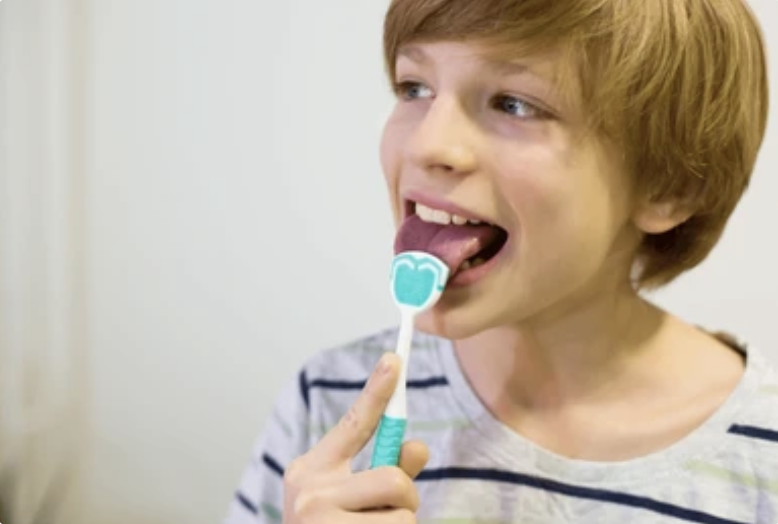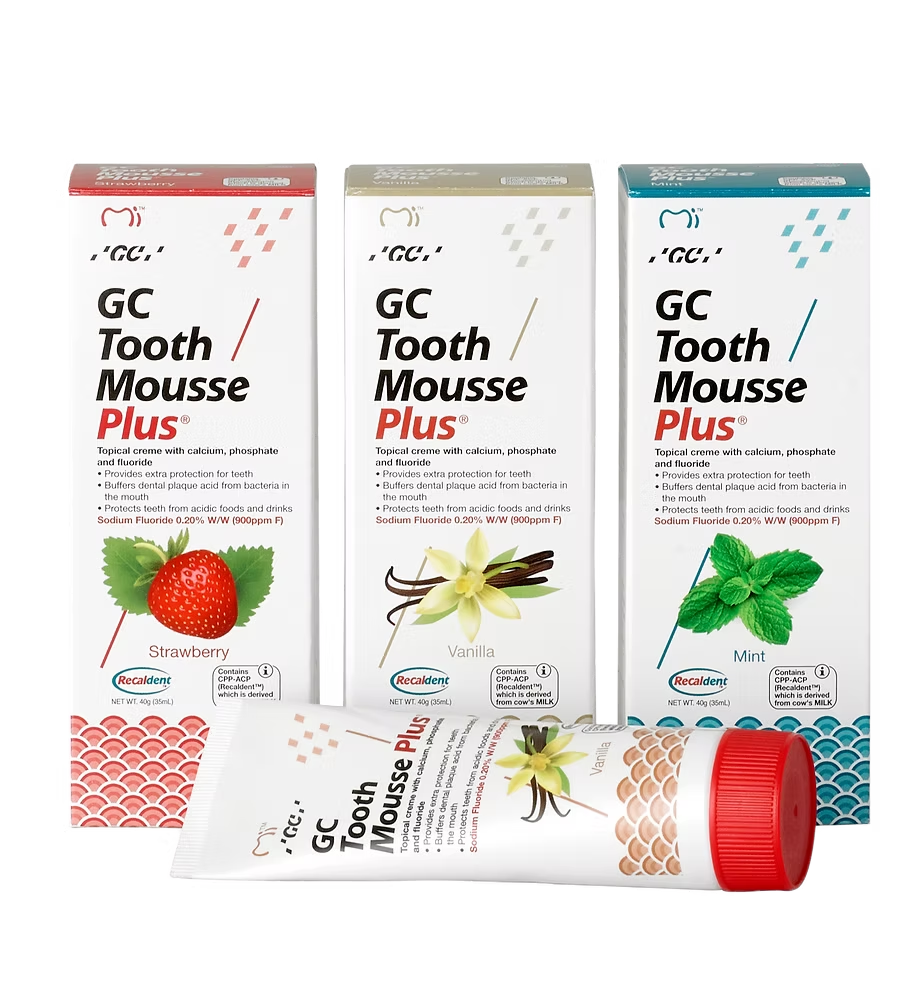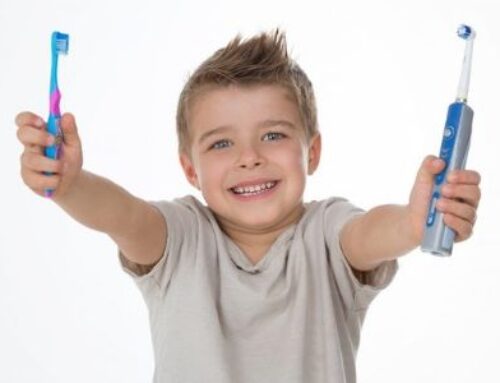Did you know that brushing and flossing remove bacteria from teeth and gums but as much as 50% of the bacteria in the mouth live on the surface of your tongue?
And it’s these bacteria in particular that can be one cause of bad breath.
The best and most effective way of neutralising bacteria that live on the tongue is to scrape them off. Your kids may think it sounds yucky but if they do it they’ll not only have a cleaner tongue, but their taste buds will be alive and food will taste so much better naturally! So perhaps there’ll be less demand for sugary or salty foods.




Age-Appropriate Cleaning Methods
Newborns & Infants (0-6 months) – Use a damp cloth, gauze, or silicone finger brush. Gently wipe the tongue, gums, and inner cheeks with a clean, warm, damp cloth in a circular motion to remove milk residue and bacteria. No toothpaste is needed at this stage.
Toddlers (6 months – 3 years) – Soft, kid-friendly toothbrush or finger brush. Once the first tooth erupts, introduce a soft-bristled toothbrush with a smear of fluoride toothpaste (rice-grain size). Gently brush the tongue or continue with the cloth/finger brush method, transitioning to a brush as they get used to the sensation.
Young Children (3-6 years) – Soft toothbrush or a child-sized tongue scraper. A pea-sized amount of toothpaste can be used. Supervise them closely and teach them proper technique, like sticking their tongue out to minimize the gag reflex.
Older Children (6+ years) – Child-sized or adult tongue scraper/brush. Children should have the motor skills to use a tongue scraper more independently, but continued supervision is important until they are between 6 and 9 years old.

OUR FREQUENTLY ASKED QUESTIONS!
Thanks to our wonderful Oral Health Therapist, Sam
She works at our Werribee clinic.
If you would like to talk to her or any of our amazing team, about this or any other questions you may have, please contact us on 03 9372 8960.




